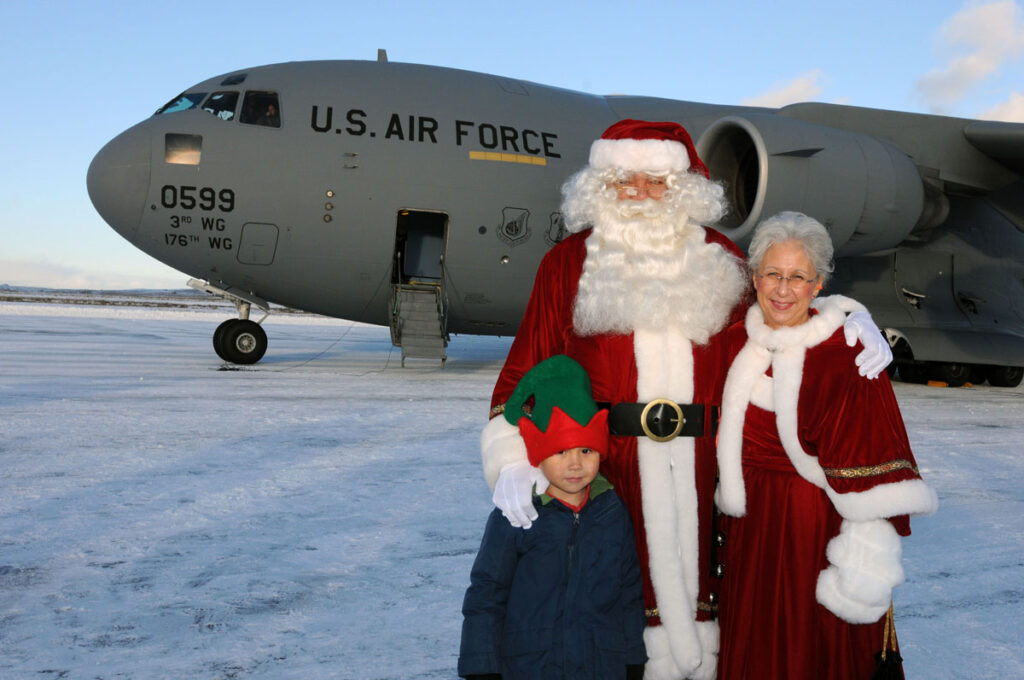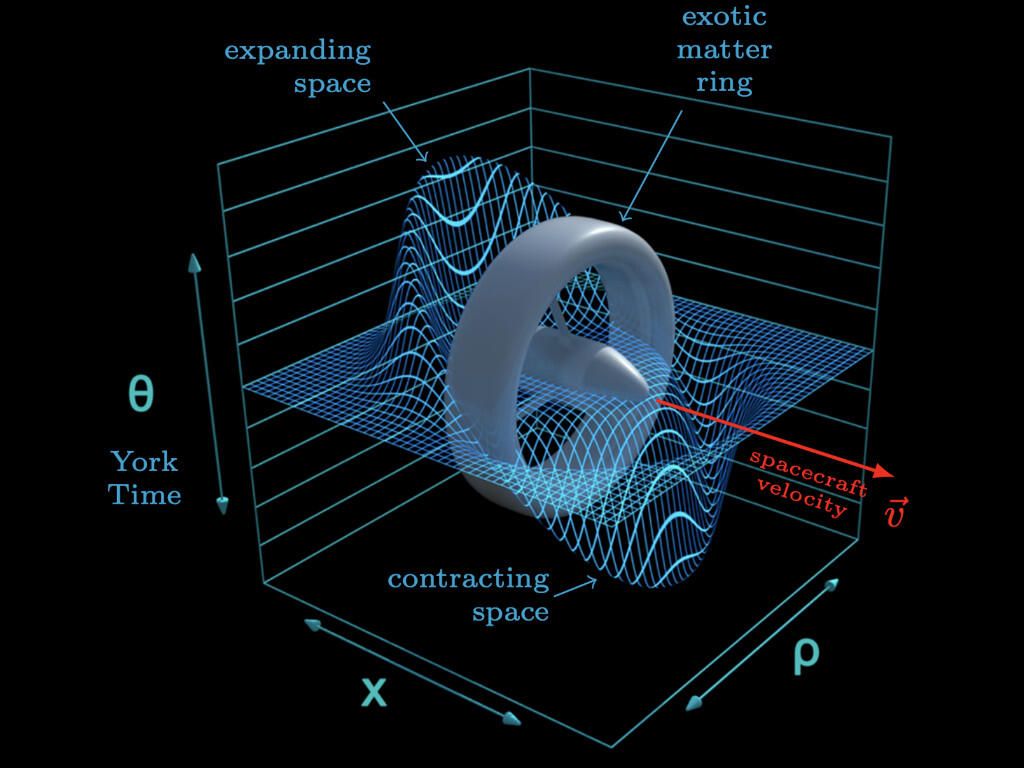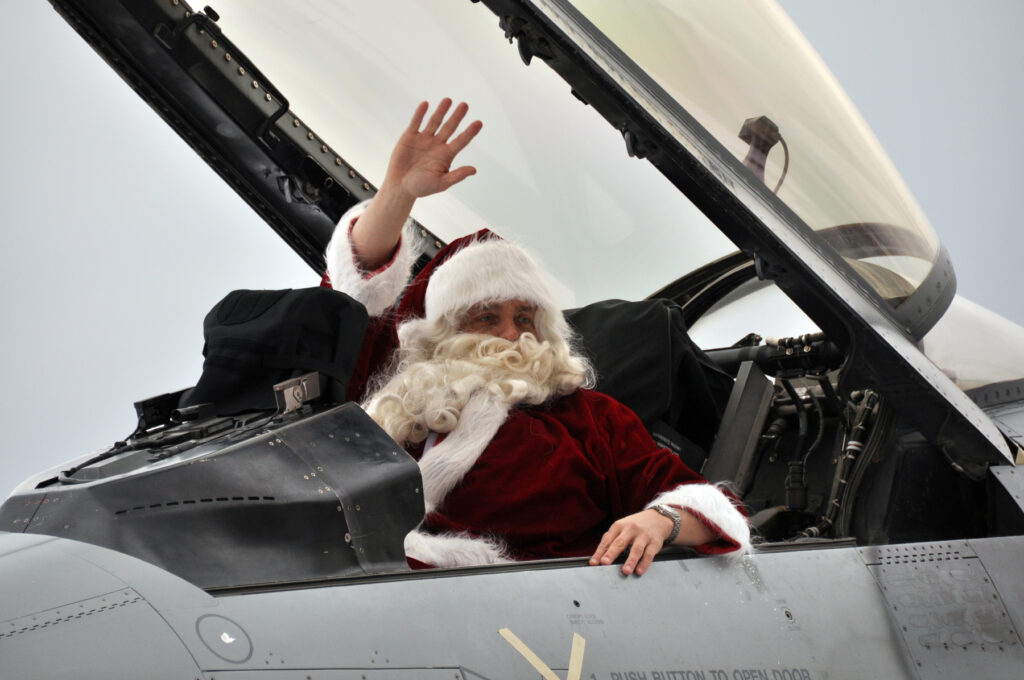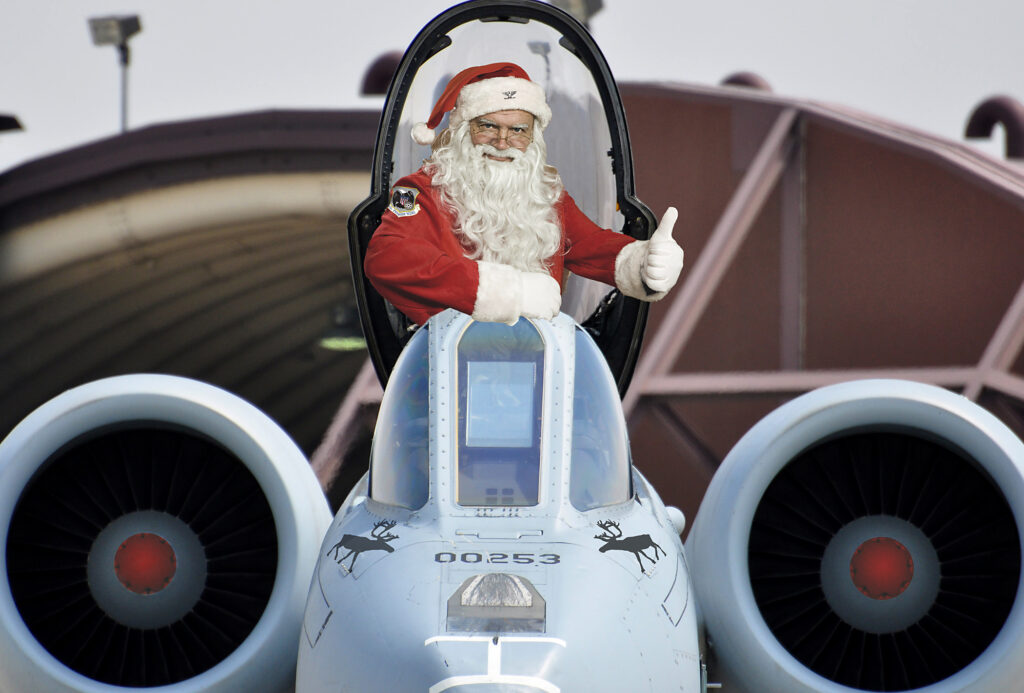With a history of operating the highest and fastest-flying non-magical aircraft in history, the United States military is uniquely suited to support the gift-delivery operations of Santa Claus throughout the evening of December 24 and into the early morning of Christmas Day. In fact, the North American Aerospace Defense Command, or NORAD, has already reactivated its website dedicated to tracking Santa’s logistical feats.
NORAD’s Santa-tracking website includes a countdown to the big day, along with educational resources about Santa, his sleigh, holiday traditions around the world, and NORAD’s history of tracking Santa throughout his delivery process.
But among the aviation-minded, the most interesting aspect of NORAD’s Santa website may be the performance specifications of Santa’s sleigh.

According to NORAD’s analysis, Santa’s sleigh has been in operation since 343 A.D., making its operational service life 1,680 years and counting – edging out even America’s venerable B-52 Stratofortress as the longest-operating heavy payload strategic platform one might spot in the skies over North America. And when we say heavy payload, we mean it – while the subsonic B-52 can fly with 70,000-pound payloads tucked inside its expansive fuselage, Santa’s hypersonic sleigh is known to depart with nearly twice that weight stowed inside Santa’s magical sack, estimated to be approximately 60,000 tons – or 120 million pounds – of presents.
But while the sleigh’s payload capacity is certainly impressive, the real magic of Santa’s deliveries is speed. To date, the fastest air-breathing jet-powered aircraft to fly with a person onboard has been the SR-72 Blackbird, with a disclosed top speed of Mach 3.2. The fastest crewed aircraft, the rocket-powered X-15, achieved Mach 6.7. The Space Shuttle could achieve even greater speeds during its unpowered re-entry from orbit, often exceeding Mach 25… but even re-entry speeds pale in comparison to Santa’s reindeer-powered conveyance.
Related: The Marines may not be Santa, but thanks to Toys for Tots, they’re close

According to an analysis conducted by astrophysicist Linda Harden, Santa and his sleigh achieve speeds as high as Mach 3,000 – or about 650 miles per second – throughout Christmas Eve night (approximately on par with NASA’s Voyager 1, currently hurtling through the far reaches of space). Arguably even more impressive is Santa’s ability to take off and land nearly vertically atop homes the world over, before accelerating rapidly to these unprecedented speeds.
To date, there are no earth-based propulsion systems capable of such a feat. The F-35B offers perhaps the closest approximation, thanks to its ability to take off over a very short distance before accelerating to supersonic speeds over Mach 1 and then landing vertically upon its return. However, the polymer-based radar-absorbent material that helps protect the F-35 from detection is known to start sustaining damage during prolonged supersonic flight, limiting the F-35B to fairly short sprints.
Santa’s sleigh, on the other hand, manages to evade most forms of detection seemingly through the same magic that allows it to fly at such incredible speeds without rendering Santa unconscious due to G-Load. Similar to the Alcubierre warp drive concept first devised in 1994, Santa’s sleigh manages to achieve and survive these speeds by creating an energy-density field that engulfs the sleigh and its inhabitants, effectively creating a vacuum bubble that gives everything inside it a negative mass.
This allows Santa to counter the effects inertia would have not only on his anatomy but also on the presents stowed inside the sleigh. Santa’s reindeer, of course, play an important role in the sleigh’s propulsion, but not in the way you might think. Rather than creating thrust, these magical animals produce incredible amounts of electrical energy, which transfers into the sleigh’s propulsion system via electrical wiring in the reigns. While the power-production process remains unclear, the amount of power produced is clearly unparalleled.
Related: Check out these Christmas movies any military family will love!

According to a 2012 paper published by NASA’s Harold White, the amount of energy required to form such a warp bubble would be staggering, but could be lessened through very intentional shaping of the craft – ultimately determining a ring-shaped craft with a passenger compartment in the middle of the ring would be optimal. While unconfirmed, it’s believed that a similar power-production ring-of-sorts is created by an energy interaction between the reigns – which Santa uses to control velocity and trajectory – and the skis mounted underneath the sleigh.
Because of the immense speeds at which Santa’s sleigh travels, no aircraft under NORAD’s command could escort him throughout the night, but NORAD does track Santa’s progress closely to render aid if any is needed. How exactly NORAD tracks Santa through this vacuum warp bubble is unclear, as NORAD tends to classify its most advanced detection means.
According to the specs provided by the joint American and Canadian NORAD Command, the only defensive measures Santa carries on Christmas night are the reindeer’s antlers – which may serve as a devastating electrical weapon when engaged based on the supernatural levels of power production these reindeer are capable of.
Nonetheless, alert fighters are standing by to provide Santa with backup throughout the night should the Grinch ally itself with an adversary nation with advanced air combat capabilities. Santa is well versed in the procedures leveraged by American fighter pilots, logging countless hours in the cockpits of various jets during his 11 months of downtime per year, to keep his high-speed piloting skills sharp.
Related: 5 benefits of having duty on Christmas

NORAD remains standing by to render aid should anything go awry during Santa’s busiest night of the year, even operating a call center people can call to check on Santa’s progress at any time during the evening. Last year, a combined group of US and Canadian military personnel and civilian volunteers fielded more than 250,000 calls from countries around the world in their efforts to track and support Santa’s Christmas operations. Last year, the team fielded calls in several languages, including English, Chinese, French, German, Italian, Japanese, Portuguese, and Spanish.
So, if you and your loved ones happen to celebrate Christmas, make sure to swing by NORAD’s Santa Tracker website, or give them a call at 1 (877) HI NORAD so you can know right where the jolly old gift-giver and his hypersonic sleigh can be found at any given time.
Yet, as magical as it might be to sneak a peek at Santa and his sleigh as they fly through the sky, we all know he can’t deliver any presents until everyone’s already in bed.


